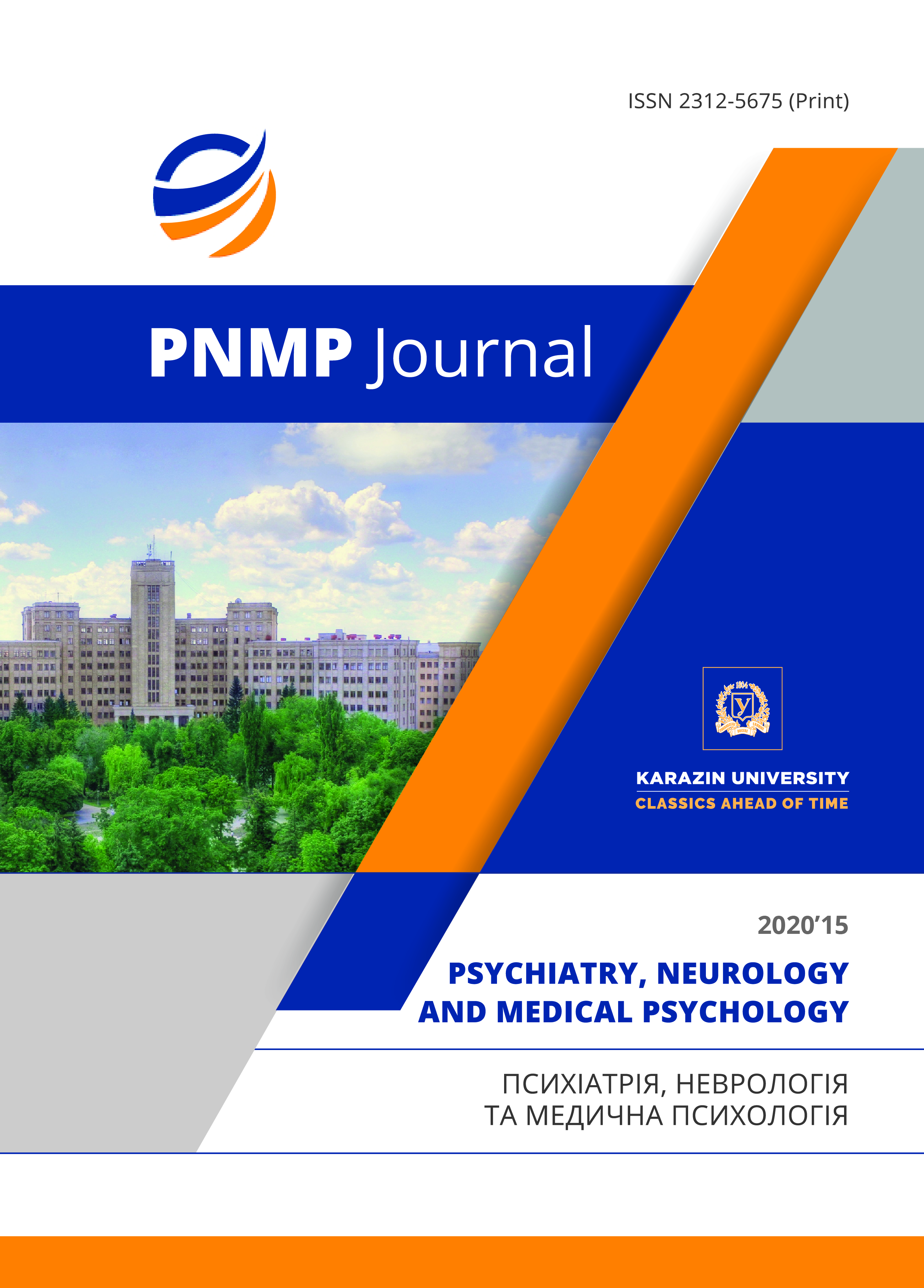The use of cytoflavin in the pathogenetic therapy of the craniocerebral injury of the soldiers involved in antiterrorist operation (ATO) – joint forces organization (JFO)
Abstract
Craniocerebral trauma an important form of cerebral pathology, which regardless of the nature and degree of severity is the only pathogenetic process, which leads to structural and functional changes in the brain with a violation of metabolic processes, hemo- and liquid craniantic [4, 7]. The problem of traumatic lesions of the brain does not lose the relevance, despite numerous research, improving the technical equipment of the medical units and organizational measures [2, 4]. The basis for the successful treatment of patients with the brain injury is the emergence of hospitalization and diagnosis with the purpose of determining the most optimal therapeutic measures [1, 4]. Existing diagnostic and treatment programs of mild and moderate severity of the brain injury are far from perfection [4, 7]. The negative moment in the brain injury is progression in the remote period of vegetative, emotional and intellectual - mental disorders that form a traumatic disease of the brain injury and tract the activity of the patient's health traffic activity [8, 10, 11]. Thus, the need for dynamic study of the peculiarities of the course of the periods of brain injury and the development of the algorithm of the treatment tactics and methods of prevention is arranged.
Objective: explore the effectiveness of the use of Cytoflavin in the mild and moderate severity of the brain injury in the acute and remote periods in fighters of the joint forces organization (JFO - ATO).
Material and methods. After receiving written consent to the implementation of a comprehensive survey in accordance with the principles of the Helsinki Declaration of Human Rights, the Convention of the Council of Europe on Human Rights and Biomedicine, the relevant laws of Ukraine and international acts in the randomized method of researching involved 117 soldiers of the (JFO – ATO) with various clinical forms of the brain injury: (concussion 42 soldiers; mild cerebral contusion 41 soldiers; moderate cerebral contusion 34 soldiers). Each clinical group was distributed to two subgroups A and B: (subgroup A to standard treatment took Cytoflavin and amounted to the group of comparison, and subgroups B in treatment received according to the clinical protocol without the use of Cytoflavin). The fighters (JFO – ATO) were in the treatment in the neurological and neurosurgical department of the Military Medical Clinical Center of the Western Region. The results of the study were treated with a statistical method of evaluating the significance of differences in Fischer.
Results of the study. Significant difference in the frequency of complaints in the fighters (JFO – ATO) between the subgroups of each clinical form of the brain injury to the treatment in acute and in the remote periods we did not note be marked. The severity of complaints was more available, depending on the degree of increasing the severity of the brain injury and prevailed in percentage in subgroups B. The frequency of complaints significantly decreased in both subgroups of all clinical forms of the brain injury after treatment in acute and in remote periods, but more pronounced changes were noted in subgroups A, which received additionally Cytoflavin, compared to subgroups B of which, received a standard treatment.
Conclusion. The results of treatment of mild and moderate severity of the brain injury in both acute and in remote periods positively influenced the use of Cytoflavin, which allowed us to achieve more and more and restore the neurological functions.
Downloads
References
Andrieiev O.A., Skotska O.Ie., Kadzhaia N.V. The ways of objectivization of light cranio-cerebral trauma in acute period. Clinical surgery. 2015, no.11, pp. 4-9. [in Ukr.]
Hryhorova I.A., Novak A.S. Clinical and diagnostic aspects of mild traumatic brain injury. International Medical Journal. 2016, no. 3(87), pp. 64-68. [in Russ.]
Hryhorova I.A., Kufterina N.S. Neurophysiologic Analysis of Young People after Mild Traumatic Brain Injury. International Journal of Neurology. 2011, no. 7(45), pp. 43-44. [in Ukr.]
Gusev E.I., Konovalov A.N., Skvortsova V.I., Gekht A.B. Neurology.National guide. Moscow:GEOTAR-Media; 2010. 1054p. [in Russ.]
Aderson-Barnes V.C., Weeks S.R., Tsao J.W. Mild traumatic injury update. Continuum Lifelong Learning Neurology. 2010, no. 6(16), pp. 8-18.
Alekseenko Ju.V. Consequences of mild traumatic brain injuries: clinical interpretation, treatment and prevention. Neurology and neurosurgery. Eastern Europe. 2017, no. 1(7), pp. 10-66. [in Russ.]
Lihterman L.B. The doctrine concerning sequellae of head injury. Neurosurgery. 2015, no. 1, pp. 9-14. [in Russ.]
Traumatic encephalopathy. [Internet]. [Guoted 2018 March 8]. Access: http://www.lvrach.ru/2016/05/ [in Russ.]
Rapp P.E., Curley K.C. Is a diagnosis of "mild traumatic brain injury" a category mistake? Trauma Acute Care Surg. 2012, no. 2(73), pp. 13-11.
Muravskyi A.V. Traumatic brain injury in boxers (clinical features, diagnosis, prognosis)] [dissertation]. Kyev, 2016. 337p. [in Ukr.]
Zadorozhna B.V. Posttraumatic brain disease (clinic, diagnostics, prognostication). Clinical and exterimental pathology. 2012, no. 1, pp. 3-58. [in Ukr.]

